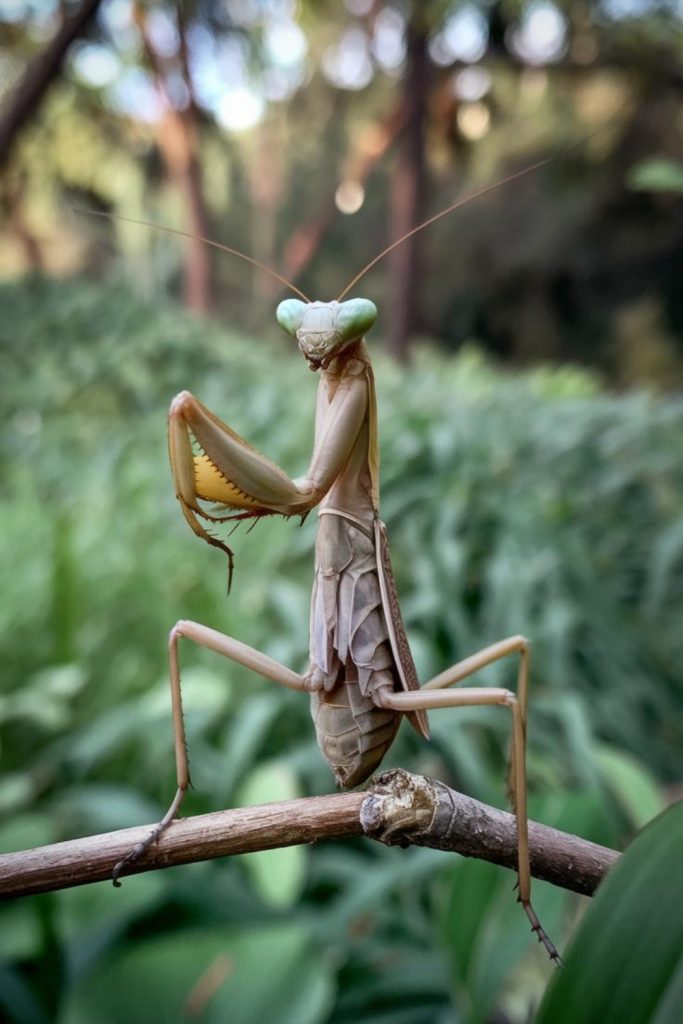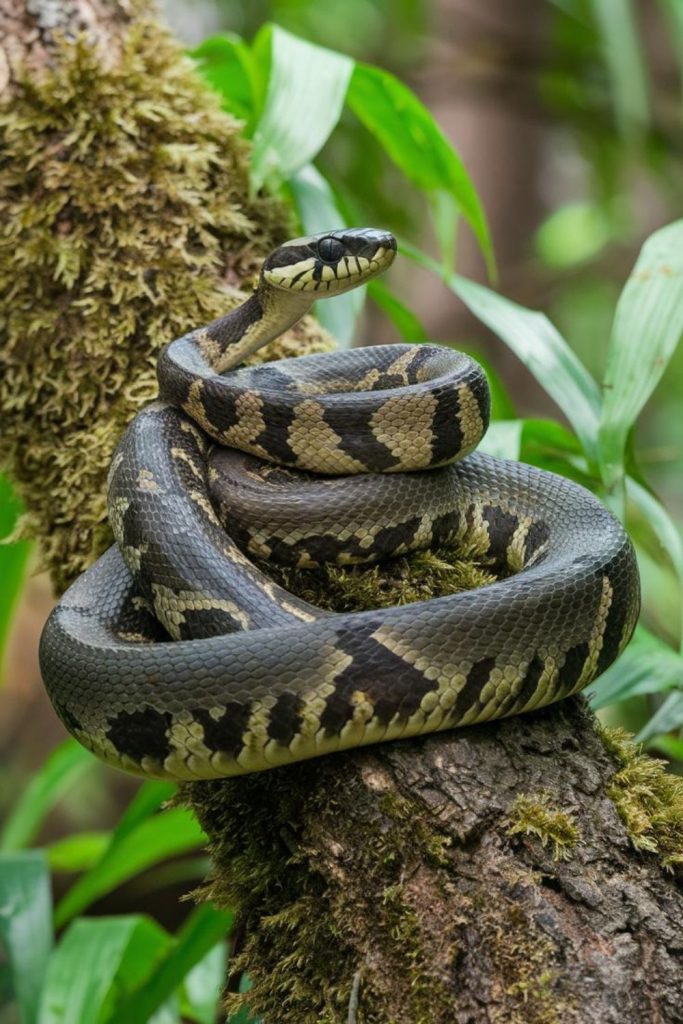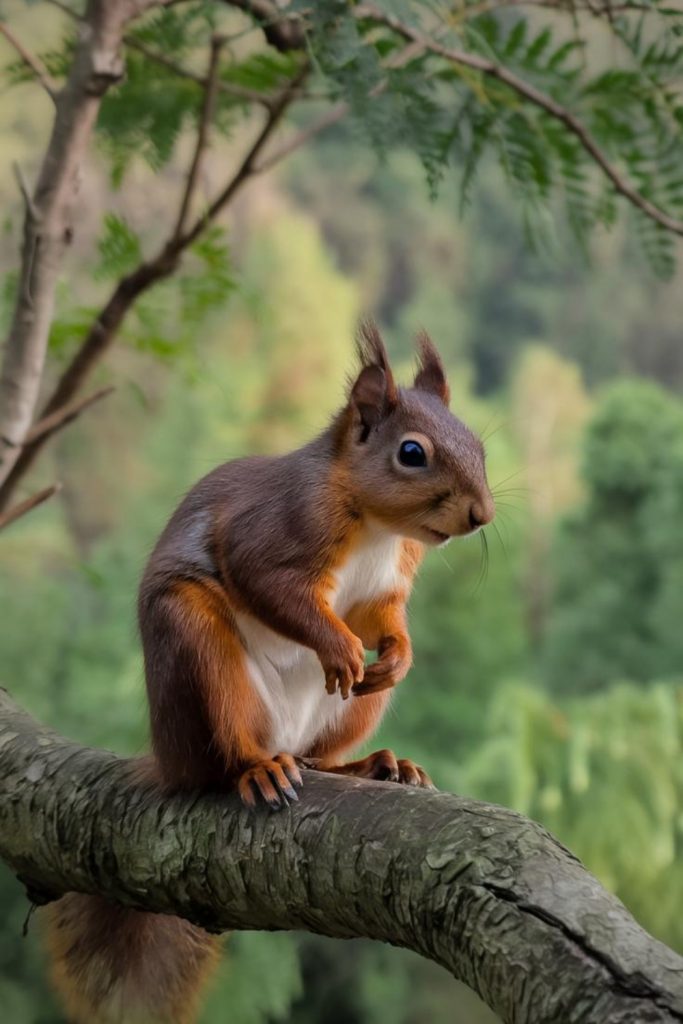Hummingbirds are some of the smallest and most agile birds in the world, but even their speed and size can’t protect them from the natural predators lurking in their environment.
In this article, we’ll explore 9 deadly hummingbird predators that pose a real threat to these tiny flying jewels, including threats around hummingbird feeders.
Key Takeaways (Hummingbird Predators):
- Despite their agility, hummingbirds have a wide range of natural predators.
- These predators come in many forms, including birds, mammals, and reptiles.
- Learning about these predators gives us a deeper appreciation for the challenges hummingbirds face daily, especially around hummingbird feeders.
Get ready to be surprised! These are the top 9 deadly predators that pose a real threat to these beautiful birds; some might shock you!
Related Post: How Many Eggs Do Hummingbirds Lay?

1. Praying Mantises
While they may seem too small to threaten a bird, praying mantises are expert hunters.
- Mantises1 camouflage themselves on flowers where hummingbirds feed.
- When a hummingbird comes close, the mantis strikes with surprising speed.
- Once caught, the mantis can overpower the bird, especially young or smaller hummingbirds.
This insect is a stealthy hunter that surprises its prey2, making it one of the most unexpected predators for hummingbirds!

2. Large Spiders
Large spiders like orb-weavers can pose a serious threat to hummingbirds.
- Orb-weavers3 create strong webs that can ensnare flying hummingbirds.
- Once a hummingbird is trapped, it can struggle to free itself.
- The spider will then immobilize and feed on the bird.
For a hummingbird, flying into a spider’s web can be a fatal mistake.

3. Snakes
Tree-dwelling snakes are one of the biggest threats to nesting hummingbirds.
- These snakes often hunt hummingbirds’ nests for eggs and chicks.
- Some snakes are agile enough to catch adult hummingbirds when they’re perched or resting.
- Once in a tree, snakes are quiet and undetectable until they strike.
Hummingbirds must remain vigilant around snakes, especially when nesting in higher places.

4. Squirrels
Squirrels, though often viewed as cute garden animals, can be dangerous to hummingbirds.
- They raid nests to eat both eggs and chicks.
- Squirrels are agile climbers and can easily reach high nests.
- In urban areas, they’re especially opportunistic, targeting birds at hummingbird feeders.
It’s a reminder that even small mammals can be predators when it comes to hummingbirds.

5. Domestic Cats
Household cats, particularly outdoor cats, are some of the most common predators of birds, including hummingbirds.
- Cats use their quick reflexes to catch hummingbirds either while they’re feeding or resting.
- Their sharp claws and teeth can easily injure or kill a hummingbird.
- Outdoor cats significantly impact local bird populations, making them a major threat around hummingbird feeders.
Keeping cats indoors is one way to help protect these vulnerable birds from becoming prey.

6. Hawks
Hawks4 are some of the most formidable bird predators in the sky.
- Smaller hawks, like the Sharp-shinned Hawk, are known to hunt hummingbirds.
- These hawks rely on their speed and sharp eyesight to spot and catch hummingbirds mid-flight.
- Once targeted, a hummingbird has little chance of escaping due to the hawk’s strength and precision.
Though hummingbirds are fast, hawks are faster and more powerful, making them a dangerous predator.

7. Owls
Even nocturnal birds like owls5 are a threat to hummingbirds, particularly at night when they rest.
- Small owls, such as the Elf Owl, are known to hunt hummingbirds.
- These owls use their silent flight to sneak up on resting hummingbirds.
- They can snatch birds right from their nighttime perches.
For hummingbirds, resting in exposed areas can be a risky decision when owls are around.

8. Blue Jays
Blue jays6 are intelligent and opportunistic birds that are known for causing trouble for smaller birds.
- They frequently raid nests for eggs and chicks.
- Blue jays will even chase adult hummingbirds away from hummingbird feeders to steal nectar.
- These birds are aggressive and territorial, making them a real problem for hummingbirds.
In the world of birds, Blue jays are the bullies, pushing smaller species like hummingbirds around.

9. Larger Birds
Larger birds, such as crows7 and ravens8, can prey on smaller hummingbird species.
- They raid nests for eggs and will attack fledgling hummingbirds.
- In some cases, they may even target adult hummingbirds.
- Their size and strength give them a huge advantage over tiny hummingbirds.
For hummingbirds, larger birds represent one of the greatest threats in the wild.
How Do Hummingbirds Defend Themselves?
Despite having many predators, hummingbirds have developed some impressive defence mechanisms:
- Speed and agility: Their rapid flight and ability to hover and change direction in mid-air make them hard to catch.
- Territorial aggression: Hummingbirds are fiercely territorial and will aggressively defend their feeding areas from predators.
- Nesting in hidden areas: They often build their nests in concealed or camouflaged spots, making them harder to find.
These adaptations help hummingbirds survive despite the dangers they face from predators.
Conclusion:
Hummingbirds may be small, but their world is full of large challenges. From insects to birds and even mammals, they have a variety of predators to watch out for. Yet, with their speed, agility, and resilience, hummingbirds continue to thrive in the wild and around our hummingbird feeders.
Which hummingbird predator surprised you the most? Share your thoughts in the comments below!
Frequently Asked Questions about Hummingbird Predators
Q: What are the most common predators of hummingbirds?
A: The most common hummingbird predators include praying mantises, large spiders, snakes, squirrels, domestic cats, hawks, owls, blue jays, and larger birds like crows.
Q: Can a praying mantis really eat a hummingbird?
A: Yes, surprisingly, praying mantises can and do eat hummingbirds. They’re known to ambush hummingbirds at feeders or flowers.
Q: How do hummingbirds use spider webs?
A: Hummingbirds actually use spider webs as a building material for their nests. The sticky silk helps bind the nest together and provides flexibility.
Q: Are hummingbirds fast enough to outfly predators?
A: Hummingbirds are incredibly fast and agile, which helps them evade many predators. However, some predators like hawks can still catch them.
Q: What can I do to protect hummingbirds at my feeder?
A: To protect hummingbirds at your feeder, keep cats indoors, place feeders away from areas where predators might hide, and consider using baffles to deter climbing predators like squirrels.
Q: Are baby hummingbirds more vulnerable to predators?
A: Yes, baby hummingbirds (chicks) and eggs are more vulnerable to predators, especially those that raid nests like snakes, squirrels, and some birds.
Q: Do all hummingbird species face the same predators?
A: While many predators are common to all hummingbird species, some may face unique threats depending on their habitat and geographical location.
Q: Are Ruby-throated Hummingbirds particularly vulnerable to any specific predator?
A: Ruby-throated Hummingbirds face similar predators to other hummingbird species, but they may be particularly vulnerable to predators common in their eastern North American range, such as blue jays and sharp-shinned hawks.
References
- Predatory insects of the order Mantodea, characterized by elongated bodies, raptorial forelegs, and a distinctive upright stance. ↩︎
- The ecological interaction in which one organism (predator) kills and consumes another (prey). ↩︎
- Family of spiders (Araneidae) known for constructing spiral wheel-shaped webs to capture flying insects. ↩︎
- Birds of prey in the family Accipitridae, characterized by sharp talons, hooked beaks, and exceptional eyesight for hunting. ↩︎
- Nocturnal birds of prey known for their large eyes, silent flight, and ability to rotate their heads up to 270 degrees. ↩︎
- Vibrant blue-crested birds of the Corvidae family, native to North America and known for their intelligence and diverse vocalizations. ↩︎
- Intelligent black birds of the genus Corvus, known for problem-solving abilities and complex social behaviours. ↩︎
- Large, intelligent black birds of the genus Corvus, distinguished from crows by their larger size, wedge-shaped tails, and deeper, more resonant calls. ↩︎
